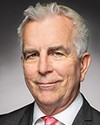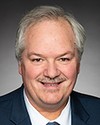To be honest, there's a lot more complexity than giving a simple answer that it is just this one thing, but it is fundamentally about connection. It's about relationships, and one of those relationships is to the land. Conceptually, from the teachers I've had, from indigenous elders and providers, the solution to addictions focuses around relationships more than substituting other therapies or modalities, and the relationship to the land is a really important relationship for many indigenous peoples and cultures.
Establishing those reconnections, along with the reconnections to who you are as an indigenous person, to your family and to your ancestors.... These are the connections that actually draw people into a positive state of identity as a human being. People who acquire that state—a good relationship with themselves, a positive outlook—tend to make affirming, positive choices for themselves. It's those relationships that support them to make choices such as decreasing the use of harmful substances on their bodies.
I've seen it play out as people going on a canoe journey or, actually, people just taking daily walks to the beach in our neighbourhood to connect with the ocean. There are many ways to re-establish those relationships, and there are many very sophisticated indigenous modalities, from indigenous medicine providers, to actually bring about those reconnections to the land and that meaning. I don't want to belittle the sophistication of indigenous medicine practice because it is sophisticated, but there's a lot of evidence that this is a pathway for many to change their substance use.
To your question, yes, I definitely, wholeheartedly endorse greater investment both in developing the protocols and in developing the resources.




